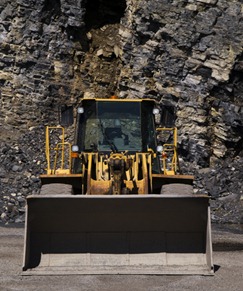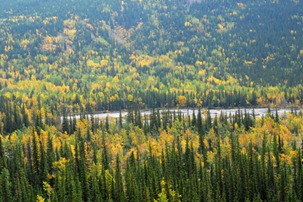Keystone: A Pipeline in the Wrong Direction
 Several hundred people have elected to get themselves arrested by demonstrating in front of the White House against the proposed Keystone pipeline, designed to carry oil from Canada’s tar sands in Alberta to Gulf Coast refineries. Much of the state of Nebraska – hardly a liberal environmental bastion – is against its passage through the state’s territory. Yet the Obama administration has made it clear that it will support its construction.
Several hundred people have elected to get themselves arrested by demonstrating in front of the White House against the proposed Keystone pipeline, designed to carry oil from Canada’s tar sands in Alberta to Gulf Coast refineries. Much of the state of Nebraska – hardly a liberal environmental bastion – is against its passage through the state’s territory. Yet the Obama administration has made it clear that it will support its construction.
The Keystone pipeline, however, is just one piece of the oil pie – and America’s willingness to eat it, no matter what the cost. It represents a 20th Century solution to a problem that should be approached with 21st Century alternatives. It has garnered the President’s support because oil from Canada’s tar sands seems to offer the United States the potential to free us from imported oil and the costly relationships with often repressive foreign governments it comes with. In exchange, it demands excruciatingly large costs in water and energy and threatens multiple forms of environmental damage. It is not a direction the country should be heading in when it should be directing its attention to renewable energy.
A basic problem with tar sands oil, even after it is extracted from the sands, is that it is just about the heaviest crude oil available. To get the 300 million gallons of gasoline Americans use each single day, we have been refining light crude oil, which produces about 15 gallons of gasoline per 42-gallon barrel. At that rate, we require about 20 million barrels of oil a day, or about 7 billion a year. Currently, we import close to half of that. However, if we are to depend on tar sands to get us out of our oil-import problem, we would need four times that amount, or about 14 billion barrels of tar sands oil, because a refined gallon of heavy crude produces less than four gallons of gasoline per barrel – about a quarter what light crude does.
That is why the statement, frequently made, that Canada’s oil reserves are second only to those of Saudi Arabia is misleading. From heavier oil, less gas, gasoline, and jet fuel and can be obtained, as more of each barrel yields such lower-value oil products as asphalt. Canada will have to produce a lot more oil than we now import to provide us with the refined oil products we currently extract from our imported oil. The promise of Canada’s tar sands oil to replace American imports from other sources is a long way from realization.
 Producing that much oil from tar sands will have proportional environmental consequences. About 20 per cent of the 170 billion barrels of recoverable oil that the Canadian fields contain are close to the surface and are easily strip-mined. These are the “low-hanging fruit” that is being plucked first, but these are also the barrels whose mining is causing the greatest damage. To do the surface mining, vast areas of boreal forest – the forest cover that sequesters the most CO2 on each – are simply removed and discarded as “overburden.” The thousands of acres in the Alberta wilderness that have been stripped of their forest cover are vast pale scars on photographs from Google’s satellites.
Producing that much oil from tar sands will have proportional environmental consequences. About 20 per cent of the 170 billion barrels of recoverable oil that the Canadian fields contain are close to the surface and are easily strip-mined. These are the “low-hanging fruit” that is being plucked first, but these are also the barrels whose mining is causing the greatest damage. To do the surface mining, vast areas of boreal forest – the forest cover that sequesters the most CO2 on each – are simply removed and discarded as “overburden.” The thousands of acres in the Alberta wilderness that have been stripped of their forest cover are vast pale scars on photographs from Google’s satellites.
The Alberta government requires the oil companies to return the land they mine for the oil to “equivalent land capability,” but according to Alberta’s environmental laws, agricultural land is “equivalent” to boreal forest. Unfortunately, this equivalence does not reflect the land’s ability to sequester carbon. Grazing land sequesters one-tenth of the CO2 that boreal forest holds. But even at this low standard, virtually no land has been reclaimed. By 2008, according to Canada’s Parkland Institute, only a single square kilometer of the 480 kilometers mined to that date had been reclaimed, and that kilometer, “ a complex of forests and low-lying wetlands, has been transformed into a dry, hilly upland with new trails for human use.”
The surface mining also uses vast quantities of fresh water. The “tar sands” are just that: sand coated with tar-like oil. To remove the oil from the grains of sand takes solvents which are diluted with 2 to 4.5 gallons of water for every gallon of oil extracted. The dense, viscous oil is diluted again to get it to flow through pipes to where it can be shipped or refined, and the diluents are mixed with more water. Without the Athabasca River, one of Canada’s longer waterways, mining the region’s tar sands would not be unlikely, if not impossible.
 But all the water used for mining the oil is deeply contaminated and has to be kept in vast tailings ponds which also contain the chemical and natural residues of the mining operations. It is a deadly cocktail, which has killed at least one entire flock of geese that landed on one of the ponds. As of 2007, the area of the tailings ponds totaled some 50 square kilometers – some 10 per cent of the area mined.
But all the water used for mining the oil is deeply contaminated and has to be kept in vast tailings ponds which also contain the chemical and natural residues of the mining operations. It is a deadly cocktail, which has killed at least one entire flock of geese that landed on one of the ponds. As of 2007, the area of the tailings ponds totaled some 50 square kilometers – some 10 per cent of the area mined.
Monitoring of the ponds and the runoff from the sites is reported to be sketchy. For a long time the Canadian government supported industry claims that heavy metals and other pollutants found downstream of the mining areas were “naturally occurring.” But recent, authoritative studies have changed that tune, although the government’s insistence on further studies before taking action has been seen as a delaying tactic.
No one can argue with the fact that getting oil from tar sands will make a huge contribution to Canada’s greenhouse gas emissions. Operating the equipment that is used at the mines: trucks and digging machines larger than houses; transporting the oil and wastes to their destinations; the energy needed to refine the heavy oil – all of these require the burning of vast amounts of fuel long before the energy from the oil that is extracted becomes fuel and enters the energy system.
That we will go ahead and buy the oil that is extracted at such costs talks, in the end, more about our culture than about the big, bad oil companies that are doing the dirty work for us.


